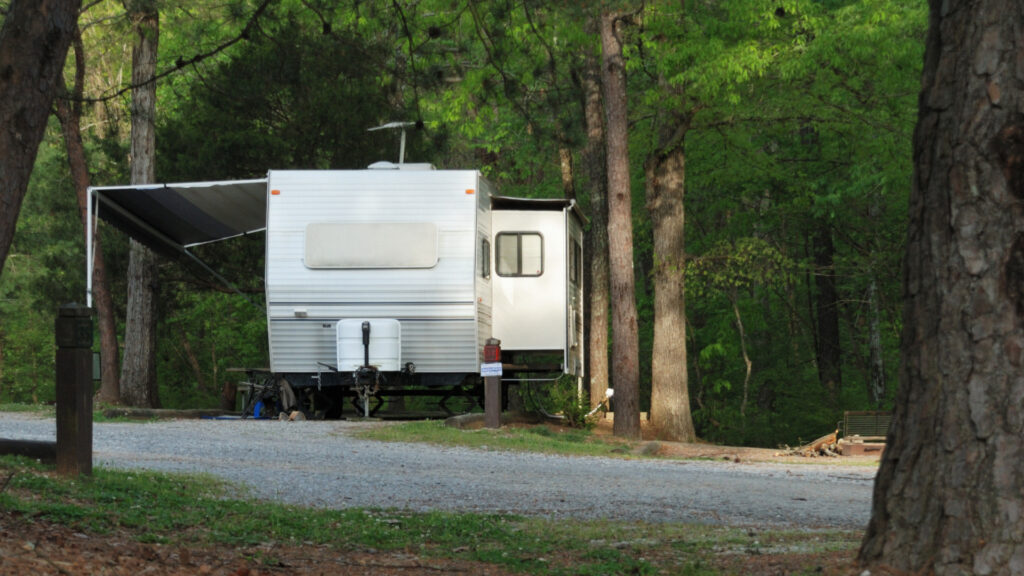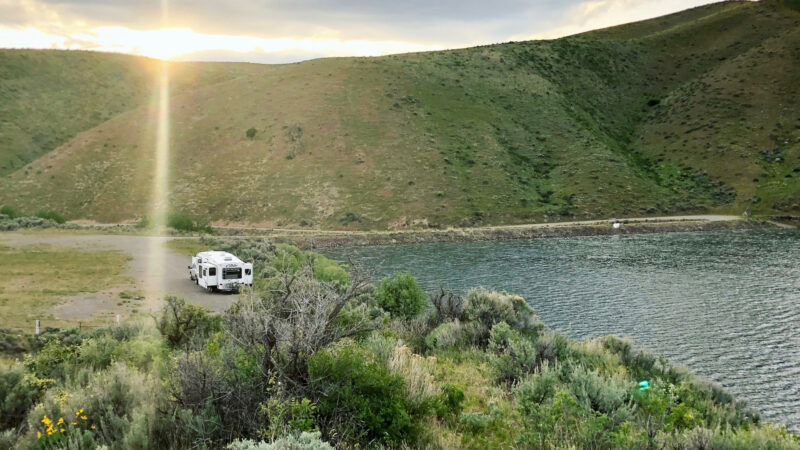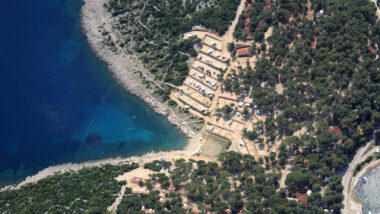Table of Contents Show
Once you have an RV, the maintenance timeline begins. From washing the rig and cleaning out air conditioning units to tightening lug nuts and lubricating RV slides, proper maintenance is crucial to the longevity of your new RV.
If your RV has slides, you’ll need to add them to your regular maintenance list. If you don’t properly care for them, you’ll end up with cracked seals, rusty gears, or a broken slide system.
Lubricating RV slides is one of the essential maintenance tasks every RVer with slide-outs must do. But it’s easy! Let’s take a closer look at how to lubricate your RV slides.
Why Is Lubricating RV Slides Important?
Taking care of your RV is important to its overall longevity. It’s also important to keep repair costs down.
Things will break, and you’ll have to do repairs — that’s the nature of RVing. But you do what you can to prevent as much damage, wear and tear, and potential problems as possible.
Lubricating RV slides is essential maintenance because of all the dirt and grime that can get into the components.
Slide rooms have moving parts that must work properly to operate. If the mechanisms get covered with debris, the RV slide will likely not extend or retract as it should.
So removing debris and dirt is an important step in lubricating RV slides. But you also want to apply lubrication because these systems are metal.
Racks, gears, and cables need to move freely, and with all of the friction that goes on to extend and retract the slide, lubrication will help keep the parts moving.
How Often Should You Lubricate Your RV Slides?
Depending on how often you travel and where, you may have to lubricate your RV slides more often. Full-time travelers might find that lubricating RV slides are on their maintenance list every quarter, while weekend warriors may only need to do it twice a year.
People who travel to dusty locations like the Southwest may also need to lubricate more often because of the constant dirt that gets on the slide system.
What Are the Different Types of RV Slides?
Properly maintaining your RV slides is a bit different based on the type of slide you have. There are four basic slide systems: rack and pinion, hydraulic, Schwintek, and cable.
Knowing what you have and how to lubricate it is important to caring for your RV slide.
Rack and Pinion
The oldest and one of the most reliable RV slide systems is the rack and pinion. This system consists of a rack, which extends under the slide and has a metal track with teeth. You’ll often find it on large, heavy RV slides.
Then the pinion, the gear rotated by a motor, drives the teeth in the metal track to move the slide in and out.

Hydraulic
A rack and pinion and a hydraulic RV slide have many similarities. It’s basically the same system, but a hydraulic pump pressurizes the lines rather than a motor.
The source of power is the main difference. Sometimes a hydraulic slide system is connected to a hydraulic landing gear.
Schwintek
Another type of rack and pinion system is the Schwintek slide. You’ll usually find this installed on smaller, lighter RV slides.
The system is easily identifiable by the aluminum racks with worm-like grooves on the exterior of the slide walls. Motors initiate the power that turns a rod with a gear. That gear follows the path of the grooves to bring the slide in and out.
Cable
Finally, a cable RV slide system differs completely from the other three. This cable and pulley system uses stainless steel cables instead of gear racks.
The cables run along the two exterior slide walls. Pulleys at the top of the slide will move it in and out.
Read More: Understanding Different RV Slides and How They Work will help when it comes to taking care of them!
Where to Lubricate Your RV Slides
Because of the varying RV slide-out systems, you might not need to apply a lubricant to the same area as your camping neighbor.
But in general, the best place to lubricate RV slides is on its rails and gears. Doing this will prevent misalignment, stuck slides, or bent parts that keep it from moving in and out. You don’t want corrosion building up on these metal parts, either.
Use a dry lubricant and not a heavy, thick one. These oily lubricants will attract dirt and grime, making it difficult to keep the RV slide system clean.
A dry lubricant is a powdered spray that coats the rails and gears with a dry film and removes dangerous moisture that could cause problems.
How to Lubricate Your RV Seals
Lubricating RV slides isn’t just about the racks and gears. You also need to properly maintain the seals. Buy a seal conditioner spray to prevent premature decaying that causes cracked seals.
If the seals are worn, water will likely seep through the cracks into your RV. Water is the ultimate nemesis of RVs.
About every two or three months, spray the slide seals. Ensure they dry completely before moving the slide.
How to Lubricate Your RV Rollers
RV slide rollers help move the slide when it’s retracting or extending. These rollers sit underneath the slide floor. They’re another mechanism you must maintain to keep your RV slide system working correctly.
Dry lubricant is best, but always check the owner’s manual before you do any work. It will have suggested lubricants and the location of all the mechanisms that need lubricating on the RV slide.
Keep in Mind: Is your RV slide out stuck? Here’s what to do if your slide out stops working.
Should You Lubricate Your RV Slide Rails?
Always follow the instructions in the owner’s manual about lubricating RV slides. How you maintained your slide-outs in your previous rig may not be the same way you should maintain them in a new rig.
Manufacturers use different components and suggest different products. You could do damage by using the wrong one. You could also void a warranty if you don’t follow the manufacturer’s instructions.
For example, Lippert recommends that owners of Schwintek slide-out systems not lubricate the gear racks. If there’s dirt or grime on the exterior racks, Lippert says to use hot soapy water. The company recommends the same maintenance for the slide seals.
When Is the Best Time for Lubricating RV Slides?
You can start lubricating your RV slides during the winterization process if you put your rig away for the winter and store it for several months. You want the metal components to be protected when you won’t check on them every month or so as you do during camping season.
Then when you get your RV out of storage in the spring, lubricate everything again. This ensures that all parts remain in working condition for the upcoming camping season.
And if you notice something that isn’t working correctly, you can address it before taking it out on a long camping trip.
Don’t Defer This Simple Maintenance
Lubricating RV slides isn’t a difficult maintenance task, but it’s easy to forget. Keep a record of your maintenance. You might wonder if you lubricated your slide already that month.
By keeping a good maintenance log, you’ll stay on top of the regular tasks that prevent damage and costly repairs.
Do you know what your manufacturer recommends regarding lubricating your RV slides?






